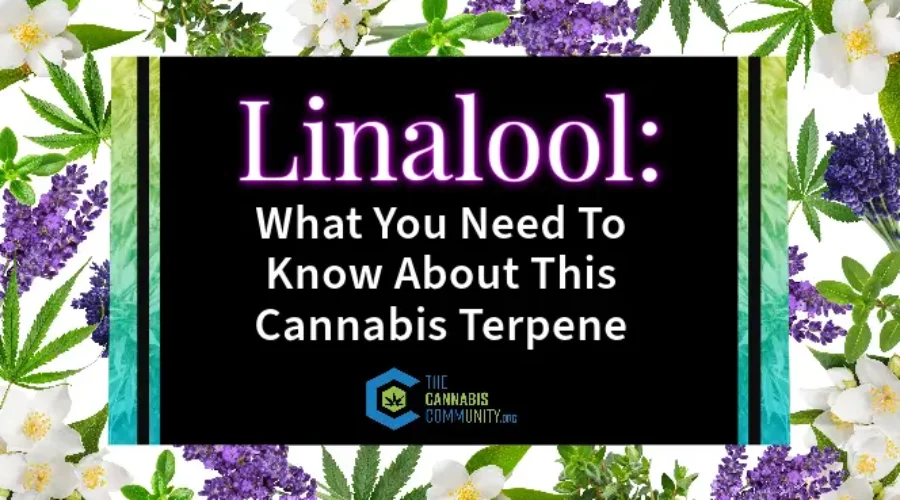Linalool: What You Need To Know About This Cannabis Terpene

Table of Contents
The linalool terpene, commonly associated with lavender, is one of the many terpenoids (or terpenes) found in the cannabis plant. Linalool terpenes may have a synergistic effect with other compounds in cannabis. So, if you want to get the most out of your cannabis consumption, read on. This article will cover the benefits of linalool and its nuances within the cannabis plant.
What Are Terpenes?
Terpenes are a diverse class of organic compounds found in various plants, particularly in cannabis. They are responsible for the distinct aromas and flavors that characterize different plants, fruits, and flowers. Terpenes play a significant role in nature, acting as both a defense mechanism against herbivores and a means of attracting pollinators.
In addition to their aromatic qualities, terpenes also hold potential therapeutic benefits. Many terpenes have been studied for their potential effects on human health, including anti-inflammatory, analgesic, anxiolytic, and antibacterial properties. These compounds often work in synergy with other compounds — like cannabinoids in cannabis — to produce what’s known as the “entourage effect,” where the combined compounds enhance each other’s effects. As a result, terpenes have gained attention not only in traditional herbal medicine, but also in the emerging field of aromatherapy and as components in natural remedies and fragrances.
What Is The Entourage Effect?
The entourage effect refers to a synergistic interaction between various compounds — typically cannabinoids like THC and CBD — along with other naturally occurring components such as terpenes and flavonoids, which are present in cannabis plants. When consumed together, these compounds collaborate to produce a combined effect that surpasses the sum of their individual effects. In essence, the entourage effect illustrates how the complex interplay of these diverse elements enhances the overall therapeutic effects of cannabis.
The entourage effect has important implications for medical and recreational cannabis use. While individual cannabinoids like THC and CBD have distinct effects, their combined presence with terpenes and other compounds can modulate and modify these effects. For instance, specific terpenes might contribute to pain relief, relaxation, or mood enhancement, while also influencing how the body processes cannabinoids. This intricate synergy not only deepens our understanding of the potential benefits of cannabis but also emphasizes the importance of considering the whole plant composition when developing cannabis-based therapies and products.
What Is a Linalool Terpene?
Linalool is a terpenoid found in over 200 plants and is often a main component. Depending on its form, it can have a sweet, floral, fresh, lavender or woody profile. Linalool is known for its cleansing properties and pleasant fragrance, and is found in 60-80% of all cleaning, self care, and fragrance products. It’s also used as a flavoring, where it’s commonly referred to as coriandrol.
Linalool is often found at concentrations of 5% or less within the cannabis plant. Due to its sedative effects and ability to reduce the secretion of stress hormones, linalool is thought to work synergistically with CBD and may help to counteract anxiety caused by pure THC. Its sedative effects are often associated with indica strains, however, it can appear in a wide variety of cannabis strains.
Chemical Structure of Linalool
Linalool is an acyclic (linear) monoterpenoid containing two isoprene units with a chemical structure of C10H18O. The presence of oxygen is the reason this compound is classified as a monoterpenoid rather than a monoterpene. Linalyl is the term for esters of linalool and they are often found in conjunction with one another, such as in lavender which contains approximately 50% linalyl acetate and 30% linalool.
Linalool is an enantiomer existing in two forms that are a mirror image of each other; (S)-(+)-Linalool and R-(-)-Linalool. The configuration can affect the way they interact with other molecules. Each enantiomer of linalool causes a different neural response in humans and is associated with different scents. S-Linalool — found in lemon grass, coriander and sweet orange flowers — has a sweet floral or fresh scent. R-Linalool — found in lavender, sweet basil and bay leaf — has a lavender or woody scent.
What Are the Effects of Linalool Terpenes?
Linalool has a variety of therapeutic benefits and uses. It’s an effective repellant for mosquitos and used in flea treatments. Linalool is sedative in nature and reduces HPA stress hormones which cause stress and anxiety. It has potential as an Alzheimer treatment by reducing behavior and neurological markers associated with the disease according to one study.
Linalool’s other benefits include:
- Muscle relaxation
- Antispasmodic
- Antiepileptic
- Antidepressant
- Anticonvulsant
- Anti-microbial
- Anti-inflammatory
- Analgesic
What Cannabis Strains Are High In Linalool?
Some cannabis strains will naturally have higher concentrations of linalool. If you want to access the benefits of linalool cannabis terpenes, it is helpful to use cultivars that contain larger amounts of this relaxing terpene.
Linalool can be found in these strains:
- Lifter
- Amnesia Haze
- Lavender
- Zkittles
- Do-Si-Do
- Kosher Kush
- La Confidential
- Dark Matter
- Shark OG
Where Can You Find Linalool Besides Cannabis?
Since linalool is found in a wide variety of plants, you won’t have a difficult search to benefit from this terpene outside of cannabis. Linalool is most notably found in the laurel, mint, citrus and birch families.
You will find linalool in:
- Lavender
- Jasmine
- Indian Bay Leaf
- Basil
- Thyme
- Goldenrod
- Mugwort
- Hops
- Coriander
- Lemongrass
- Bay Leaf
While linalool is found in lower concentrations in cannabis compared to other plants, its many benefits, pleasant profile, and synergistic effects are more than enough reasons to seek out this terpene for your cannabis consumption.
Get Your Medical Cannabis Card Online and in Minutes
Back to Directory



